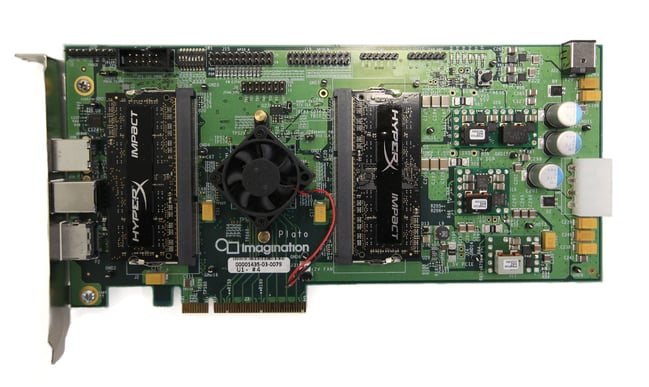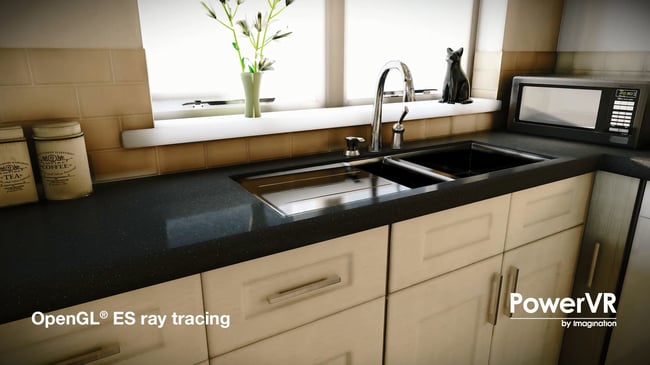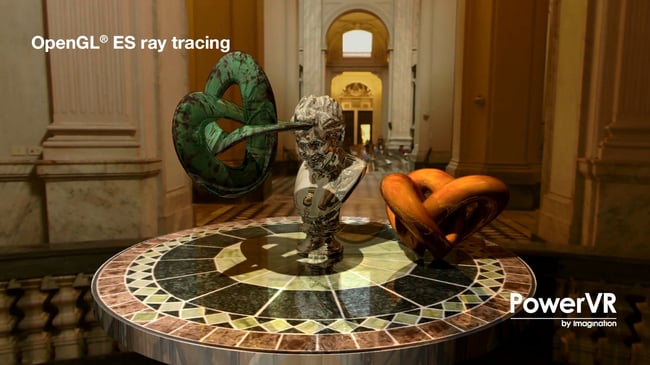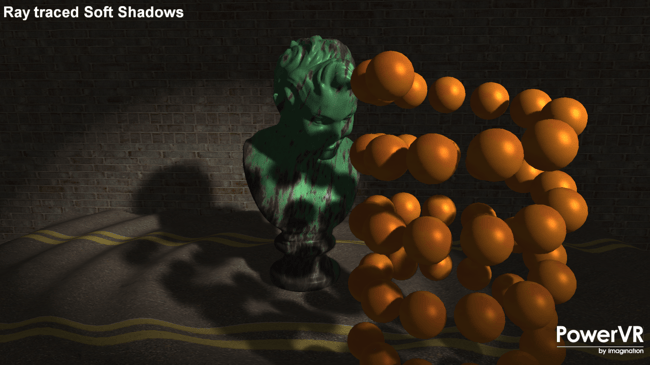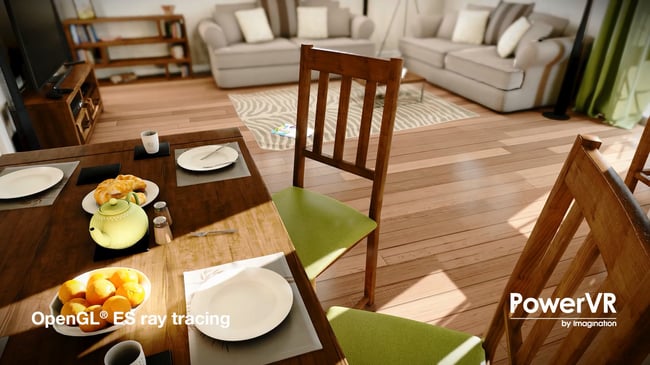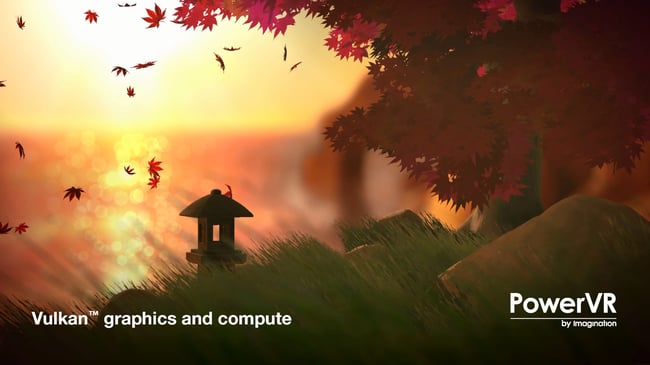- 15 March 2016
- Imagination Technologies
At GDC 2016, PowerVR continues to set the bar for high-end graphics in mobile thanks to the efficiency of the Rogue architecture. Here’s a preview of what we’re demonstrating, in pictures.
Real-time ray tracing on mobile and console
The first demonstration at the event comes from the PowerVR Ray Tracing team.
For those who are not yet familiar with our latest ray tracing technology, PowerVR Wizard is a new GPU architecture capable of generating photorealistic image quality for console-level gaming and next-generation VR apps, while delivering up to 50x better energy efficiency in ray tracing performance when compared to a traditional desktop GPU.
GDC 2016 is the perfect opportunity to preview a number of OpenGL ES extensions we’ve developed for PowerVR Wizard GPUs; these extensions enable support for real-time ray tracing on the Wizard architecture and allow developers to use the hybrid rendering techniques inside a customized version of the Unity 5 game engine.
For example, the demonstration below implements a ray tracing technique for shadows that reuses some of the concepts introduced by PCSS. PCSS (Percentage Closer Soft Shadows) is an algorithm that produces soft shadows with a variable penumbra based on the ratio between the size of the light, the blocker and the receiver distances from the light source. Traditionally, implementing ray traced shadows on a mobile or desktop GPU delivers a substantial increase in image quality but also leads to serious drops in performance. Thanks to the ray tracing engine inside the PowerVR Wizard GPU, soft shadows become very simple to implement and run extremely fast.
We’ve also added specular reflections which are notoriously hard to do using rasterized-only techniques. This is because realistic reflections are similar to soft shadows: their sharpness depends on an object’s smoothness. By using our hybrid rendering techniques, developers can easily integrate ray traced reflections into their game without having to spend an enormous amount of time trying to implement them using the traditional computational-intensive methods available today. Self-reflections are particularly important because they are almost impossible to achieve on mobile – or even consoles.
To get an idea of the level of complexity and quality that can be achieved on Wizard GPUs, we’re also showing the apartment scene below. This is a demonstration that requires billions of rays per second (gigarays) of computational performance and is possible today only a very high-end workstation with multiple desktop GPUs stacked together consuming north of 500-700 watts.
By comparison, we are able to achieve the same (or better) level of performance on a Wizard GPU that requires at least an order of magnitude less power.
To learn more about the PowerVR Ray Tracing technology and development platforms check out our latest article:
Finally, we are announcing a collaboration with Unity Technologies to bring our PowerVR Ray Tracing technology to the Unity game engine. The first result of this partnership is a lightmapping tool that will help artists quickly design and visualize advanced lighting effects in a convenient, easy to use workflow.
Console-quality graphics on OpenGL® ES
Console-level performance and image quality is now a reality on mobile class GPUs – and PowerVR is leading the way. For consumers, the PowerVR Series7XT and Series7XT Plus families are enabling a new era of gaming and visual computing applications.
To illustrate this point, my colleague Ashley Smith has used the latest OpenGL ES 3.2 API to create Dwarf Hall, a demonstration of physically-based rendering (PBR) running on a multi-cluster PowerVR Series7XT GPU. Some of the effects we’ve implemented in Dwarf Hall include:
- Over one million triangles per frame in some scenes
- Deferred shading with 128-bit physically-based G-buffer
- Full post-process pipeline with colour correction, saturation, dynamic exposure and HDR tonemapping
- Many dynamic lights and multiple specular probes treated as lights
- Soft particles
- Lens flare effects
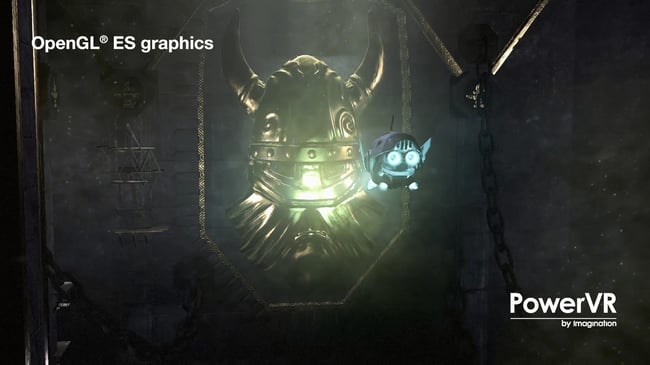
Another developer to make use of PBR on PowerVR-based mobile devices is Oxford-based NaturalMotion. The studio made use of this advanced rendering technique in their CSR Racing 2 game, achieving an impressive level of graphical fidelity when simulating the interactions of cars and light sources.
“This is not just the best-looking racing game on mobile, but the best-looking racing game full stop – including console. In some ways, we’re going beyond the quality of console.” – Torsten Reil, CEO of NaturalMotion in an interview with The Guardian
You can watch a trailer for CSR Racing 2 below:
Vulkan™ graphics and compute
Developers attending GDC 2016 will have the opportunity to see Imagination demonstrating a number of Vulkan graphics and compute applications at our booth. One example is Sunset Vista, a demo that uses Vulkan’s graphics and compute pipelines to create a calm and picturesque rendering of a cliff-top sunset.
Compute shaders are used effectively to simulate numerous features in the scene, including leaves falling and blowing in the wind, a convincing depth of field bokeh effect, and birds flying in the distance. Techniques including shadow maps, translucency and light maps are implemented with Vulkan’s graphics API to complete the look of the scene.
In addition, we will be releasing version 4.1 of the PowerVR Graphics SDK which includes full support and example code for Vulkan on Rogue and desktop GPUs; this release includes a host of new functionality, examples and documentation, including a Framework that supports the new Vulkan 1.0 API.
Experience our PowerVR demos live at GDC 2016
For those of you who want to see an overview of all the demos combined in one video, check out the clip below:
Make sure you also follow us on Twitter (@ImaginationTech) for more news and announcements from Imagination.



